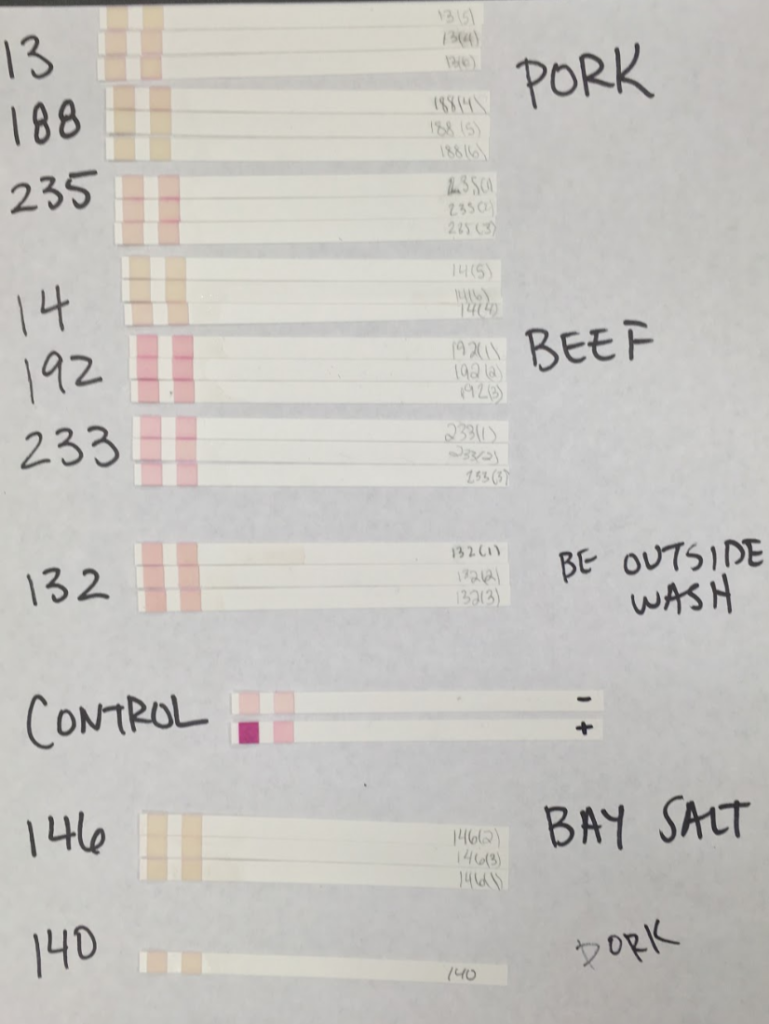By Somer Smith
Thanks to our generous sponsors, we were able to purchase Quantofix Nitrate/Nitrite Semi-Quantitative Test Strips to test for the presence of nitrate that is thought to be the cause of the reddish coloration in the salted beef and pork.
Salt curing was one of the common preservation techniques used in the 17th century to protect food from spoilage. This method is effective because it decreases the water activity of foods and deters the growth of microbes. Bay salt, or salt made via sun drying in salines, was specified as the salt to use for curing the meat, so we first suspected that there may be nitrate in the salt, which is the reason historical recipes specified its use for curing (nitrate also helps preserve food). We also decided to test the beef and pork brines from before and after the experiment to see if we could note any changes, and two pieces of the cured meat just to see if we could find any nitrate/nitrite there as well.
Methods
The semi-quantitative test strips were chosen because they are easy to use and produce quick results. As these strips are meant to be dipped into liquid, we had to begin by diluting our solid samples with water. We added 7 ml of reverse osmosis water to each 3 g of solid sample (meats and salts) and homogenized the sample for one minute. The brines are already liquid, so were not diluted. We then dipped the nitrate and nitrite fields into the solution for 1 second. After dipping the strip, we waiting for one minute before comparing the test strip to the color change scale on the bottle. The scale indicated that the darker the color, the more nitrate and nitrite were present.
Results
After running the entire lab procedure and recording the observations seen, minimal nitrate and nitrite values were observed. Further, only slight increases were also seen for “before” and “after” samples and the strips note that there’s a small margin of error within which our readings could easily fall into. It’s also possible that we had diluted our samples too much, so that the strips were unable to detect the nitrate/nitrite levels.

The results seen in lab did not confirm our hypothesis, so we went back to the drawing board. Denitrification of the nitrate and nitrite that we suspect may have been in the meat, can degrade into ammonia, which would explain the reason we saw the red coloration at the time, but were unable to detect nitrate/nitrite several months later as it could have already been converted into ammonia.
Next Steps
Due to the unclear results from the test strips, we decided to rerun the experiment using colorimetric methods that are more sensitive, and include an assay for ammonia. Our next post will cover the colorimetric assays conducted. We will also be presenting these results at Texas A&M’s Student Research Week between March 18-22!


